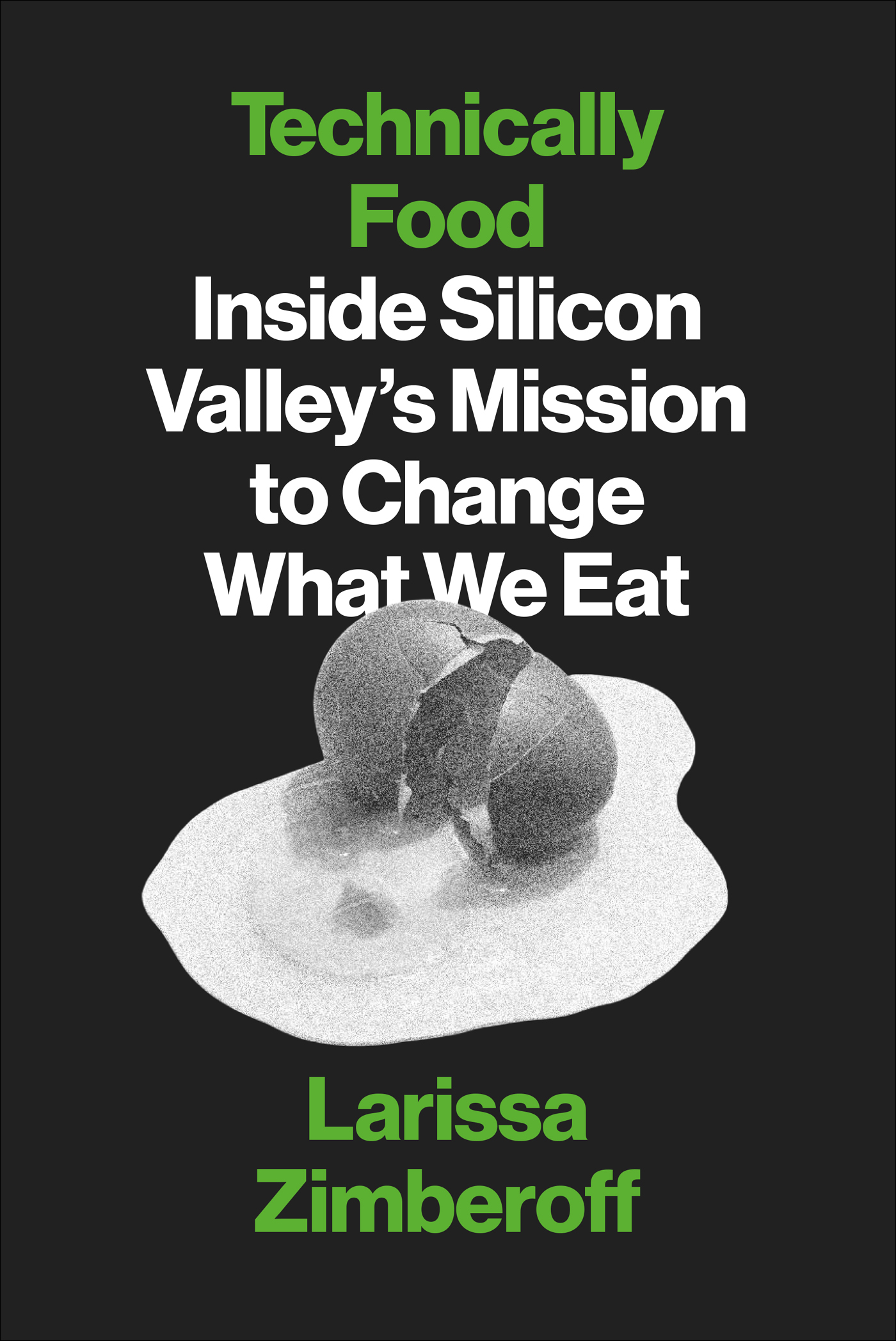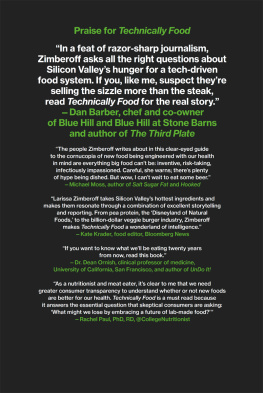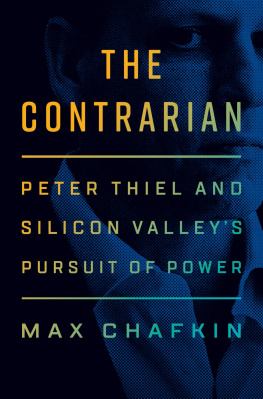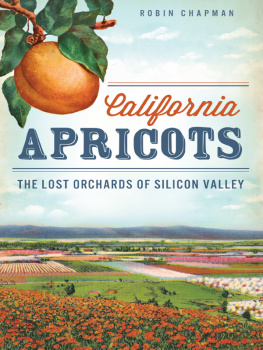Larissa Zimberoff - Technically food : inside Silicon Valleys mission to change what we eat
Here you can read online Larissa Zimberoff - Technically food : inside Silicon Valleys mission to change what we eat full text of the book (entire story) in english for free. Download pdf and epub, get meaning, cover and reviews about this ebook. year: 2021, genre: Children. Description of the work, (preface) as well as reviews are available. Best literature library LitArk.com created for fans of good reading and offers a wide selection of genres:
Romance novel
Science fiction
Adventure
Detective
Science
History
Home and family
Prose
Art
Politics
Computer
Non-fiction
Religion
Business
Children
Humor
Choose a favorite category and find really read worthwhile books. Enjoy immersion in the world of imagination, feel the emotions of the characters or learn something new for yourself, make an fascinating discovery.
- Book:Technically food : inside Silicon Valleys mission to change what we eat
- Author:
- Genre:
- Year:2021
- Rating:5 / 5
- Favourites:Add to favourites
- Your mark:
- 100
- 1
- 2
- 3
- 4
- 5
Technically food : inside Silicon Valleys mission to change what we eat: summary, description and annotation
We offer to read an annotation, description, summary or preface (depends on what the author of the book "Technically food : inside Silicon Valleys mission to change what we eat" wrote himself). If you haven't found the necessary information about the book — write in the comments, we will try to find it.
Technically food : inside Silicon Valleys mission to change what we eat — read online for free the complete book (whole text) full work
Below is the text of the book, divided by pages. System saving the place of the last page read, allows you to conveniently read the book "Technically food : inside Silicon Valleys mission to change what we eat" online for free, without having to search again every time where you left off. Put a bookmark, and you can go to the page where you finished reading at any time.
Font size:
Interval:
Bookmark:


Copyright 2021 Larissa Zimberoff
Cover 2021 Abrams
Published in 2021 by Abrams Press, an imprint of ABRAMS. All rights reserved. No portion of this book may be reproduced, stored in a retrieval system, or transmitted in any form or by any means, mechanical, electronic, photocopying, recording, or otherwise, without written permission from the publisher.
Library of Congress Control Number: 2020932351
ISBN: 978-1-4197-4709-0
eISBN: 978-1-68335-991-3
Abrams books are available at special discounts when purchased in quantity for premiums and promotions as well as fundraising or educational use. Special editions can also be created to specification. For details, contact specialsales@abramsbooks.com or the address below.
Abrams Press is a registered trademark of Harry N. Abrams, Inc.

ABRAMS The Art of Books
195 Broadway, New York, NY 10007
abramsbooks.com
Chapter 1: Algae
The Future Food Thats Always in the Future
Chapter 2: Fungi
A Steak Substitute... and Flavor Enhancer?
Chapter 3: Pea Protein
Finally, Something That Could Topple Big Soy
Chapter 4: Milk and Eggs
If No Animals Were Involved, Is It Vegan?
Chapter 5: Upcycling
Rescuing Edible Stuff to Make... More Edible Stuff?
Chapter 6: Plant-Based Burgers
Can Plants Replace Red Meat?
Chapter 7: Vertical Farms
Can Premium Greens Picked by Robots Feed the World?
Chapter 8: Cell-Based Meat
Will Animal Analogues Make It Beyond an Elite Niche?
I first started thinking about the macronutrient content in food when I was twelve, after I peed in my pants in school. I was thirsty all the time, too, but I didnt make the connection. Mom took me to the doctor for an earache and casually mentioned my recent spate of mishaps. A urine test revealed that I had type 1 diabetes. That same day, I was checked into a hospital, and a nameless diabetes educator taught me how to calculate the grams of carbohydrates in a meal. (Its as hard as it sounds.)
The result of these mental gymnastics determined how many units of mealtime insulin to inject with a needle. (Its as bad as it sounds.) When I got it wrong, the physical repercussions ranged from being coated in sweat to feeling like I was moving through quicksand. Simple pleasures, like cupcakes at birthday parties, potato pancakes at Hanukkah, and Grandmas famous challah French toast on weekends became fraught calculations.
In my world, then, food is only as good as its primary building blocks, which are carbohydrates, protein, fat, and fiber. When I eat an apple, what Im really eating are the macronutrients its composed of. I choose green apples because they are typically less sweet than red apples. Less sweet relays to my brain: fewer carbs.
As the understanding of my condition improved, the constant oversight lifted. Exercise was as necessary as learning to like coffee black and chocolate darkkey skills for my people. My knowledge gives me an edge: I understand food on a molecular level. I think of this as my superpower, and also the difference, for me, between life and death. I see through food.
Like a Russian doll, my approach to sustenance is a nesting stack of questions: What time of day is it? How much will eating affect my blood sugar? Am I going for a walk after I eat? How much of what Im about to eat is processed or packaged? I read a lot of labels.
When I spot a new food in the store, I look at the nutrition facts panel before I pour it into a bowl. This label is one of the most reproduced graphics in the world, yet very few people pay as much attention to it as I do. Only 31.4 percent of shoppers looked at the label frequently, says a 2018 study published in the Journal of the Academy of Nutrition and Dietetics of nearly two thousand young adults. While a label can hide as much as it reveals, its still our most valuable resource when choosing what to put in our mouths.
In my thirties, I realized that most of the world couldnt be bothered to see food the way I did. When I began covering the food-tech industry, I felt that this was my special contribution as a writer. Built upon this frameworkthat food is only as good as its componentsis my decade-plus background working in high tech, an experience that fast-tracked me through the startup world. The frenzy in food investments I see now feels eerily similar to the first wave of the Internet.
Covering the world of food tech startups means Im surrounded by (mostly) young entrepreneurs who are certain they can make the world a better place. Their confidence is validated by the millions of dollars they raisea sign that theyre either brilliant or on to something big. I want a triple bottom line: good for me, good for the environment, and good for business. This book began when I asked myself: What do we gain and what do we lose by embracing a future of lab-made food?
The current wave of food companies claim to be mission driven. They want to better our world with futuristic processes. They hope to reverse climate change. They want to end animal suffering and the attendant damage to the planet from industrial agriculture. But they still want to make money. Capitalism is pulling the levers. Now, companies like Tyson, Nestl, and General Mills (just a few of the legacy brands that I sometimes shorthand to Big Food) are feeling the pinch from declining profitstheir dated portfolio of products is no longer winning new generations of consumersbut theyre not going to allow themselves to be left behind. I want to believe everything that New Food (my name for the startups in my book) assures me, but are they following the same path as Big Food? These are the very same companies that have fed Americans for decades, raked in profits, and given us in return higher rates of obesity and disease.
The tension of my health being tied to capitalistic companies that want to make a profit is growing. It affects people like me with diabetes, my sister-in-law who has celiac disease, my best friends three-year-old who loves sweet foods, food-insecure communities, elderly populations, and unhoused people. Food affects everyone. Now that the world population is in the billions, and our natural resources are showing signs of breakdown, we want to know: Can we be healthy, respect food traditions, and save the environment all at the same time? Its not too much to expect.
Famous for getting seat belts into cars, longtime consumer advocate Ralph Nader is also known for cleaning up baby food in the seventies. Naders problem was that manufacturers were putting additivesmodified food starch and MSG (monosodium glutamate)into infant formula. Companies werent doing this for babies health, which could potentially be harmed with high levels of glutamate (the primary amino acid in MSG); they added it so that it would taste better to mothers, prolong its shelflife, and improve solubility, which makes it easier to mix. At issue for Nader was that the Food and Drug Administration (FDA) wasnt proactive, it was reactive. The burden of discovering problems in our food supply, he said, was left to researchers outside the industry. One of the enduring characteristics of the food industry is its penchant to sell now and have someone else test later, said Nader.
Font size:
Interval:
Bookmark:
Similar books «Technically food : inside Silicon Valleys mission to change what we eat»
Look at similar books to Technically food : inside Silicon Valleys mission to change what we eat. We have selected literature similar in name and meaning in the hope of providing readers with more options to find new, interesting, not yet read works.
Discussion, reviews of the book Technically food : inside Silicon Valleys mission to change what we eat and just readers' own opinions. Leave your comments, write what you think about the work, its meaning or the main characters. Specify what exactly you liked and what you didn't like, and why you think so.






